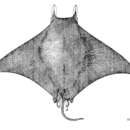Life Cycle
provided by Fishbase
Exhibit ovoviparity (aplacental viviparity), with embryos feeding initially on yolk, then receiving additional nourishment from the mother by indirect absorption of uterine fluid enriched with mucus, fat or protein through specialised structures (Ref. 50449).
Trophic Strategy
provided by Fishbase
Usually small, although it attains a max. length of 200 cm. Lives in groups and swims either close to the bottom or at the surface. Feeds on small fish and plankton.
- Recorder
- Drina Sta. Iglesia
Biology
provided by Fishbase
Found in- and offshore areas (Ref. 106604). Usually small, although it attains a maximum length of 200 cm. Lives in groups and swims either close to the bottom or at the surface. The cephalic horns serve as a funnel to bring food near the mouth. Its behavior is rather sluggish at the surface; however, they can swim rapidly and make impressive leaps out of the water. They are actually inoffensive when they are not disturbed or are not wounded. Feeds on small fish and plankton (Ref. 5377). Ovoviviparous (Ref. 4442).
- Recorder
- Crispina B. Binohlan
Importance
provided by Fishbase
fisheries: commercial
- Recorder
- Crispina B. Binohlan

